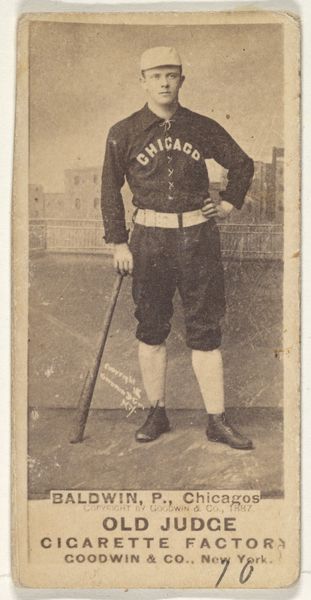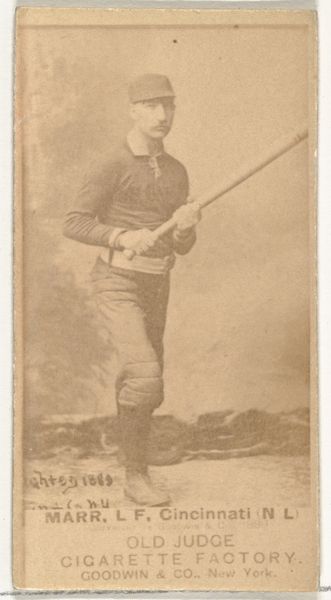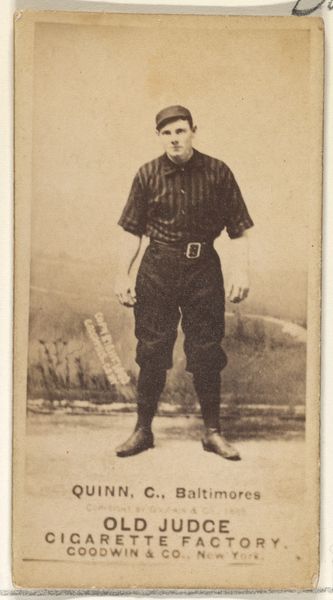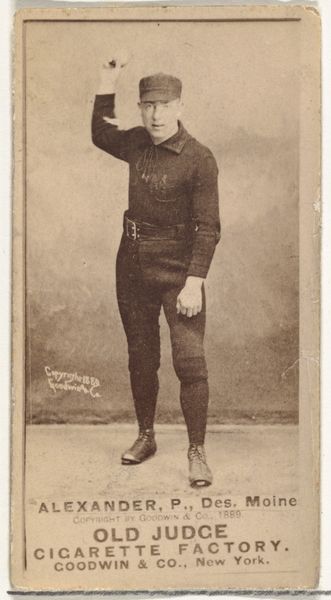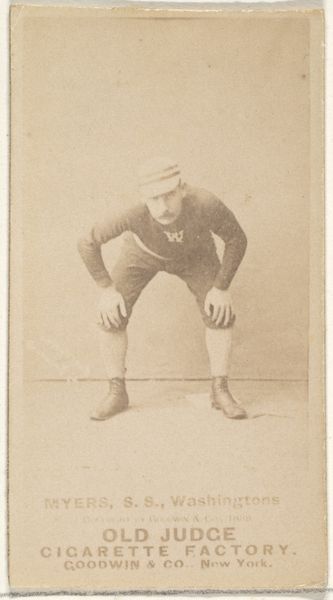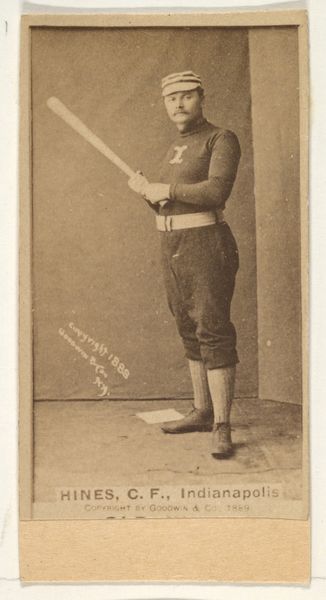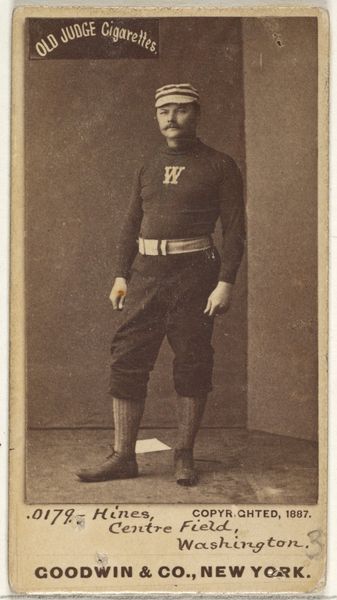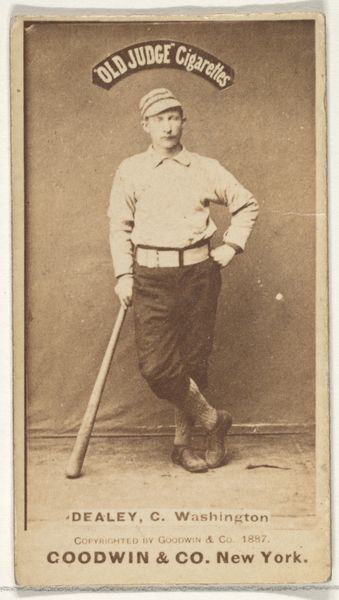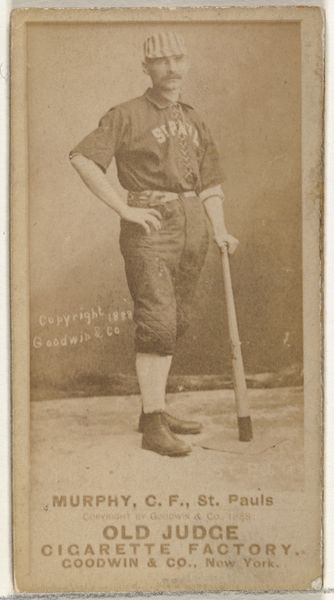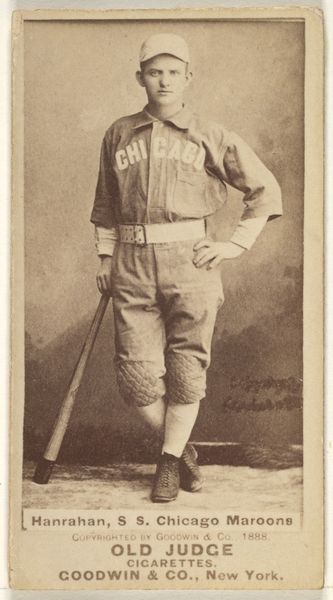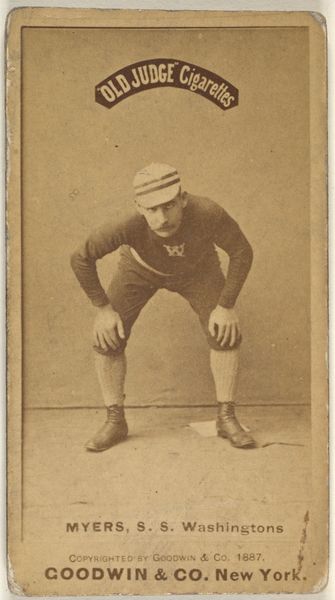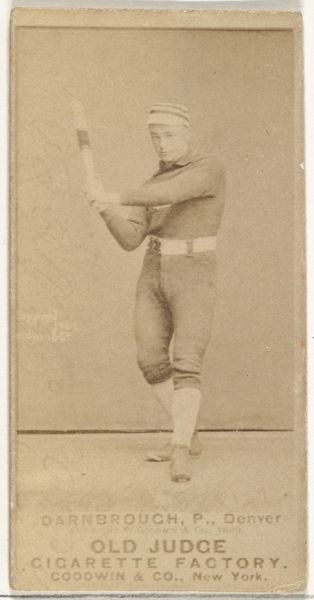
John A. "Jack" Farrell, 2nd Base, Washington Nationals, from the Old Judge series (N172) for Old Judge Cigarettes 1887
0:00
0:00
drawing, print, photography, gelatin-silver-print
#
portrait
#
drawing
# print
#
figuration
#
photography
#
historical photography
#
gelatin-silver-print
#
19th century
#
men
Dimensions: sheet: 2 11/16 x 1 3/8 in. (6.9 x 3.5 cm)
Copyright: Public Domain
Curator: This photograph, "John A. 'Jack' Farrell," is a gelatin silver print from 1887, part of the "Old Judge" series, meant to be distributed with Old Judge Cigarettes. It presents an image of Farrell, a second baseman for the Washington Nationals. It’s interesting how commercial imagery can also function as a record of its time. Editor: It's like a snapshot into the late 19th century! The sepia tones and the stiffness of his pose are really striking. It's hard to imagine baseball cards looking this way today. What’s your take on how it represents its era? Curator: This image is far from innocent. Produced during a period of intense industrial growth and, simultaneously, growing awareness of labour rights, consider how commodification operates here on multiple levels. The baseball player, the game itself, even notions of athleticism and American identity are being sold to consumers. We might even explore how this seemingly straightforward portrait contributes to the construction of masculinity and celebrity at the time. What’s he selling, besides cigarettes? Editor: He’s selling an image of himself. But I'm curious, is there a particular lens we can use to explore themes of capitalism or gender identity in the context of 19th-century America? Curator: Think about the rise of mass media and its relationship to advertising, paired with social shifts in labor and leisure. Examine period writing around these athletes and sporting culture more generally. We can understand the context to grasp how power operates in creating what we perceive as tradition or 'Americana' today. Does this shift how you view the card? Editor: Definitely. Seeing it as part of this larger web of social and economic forces makes it much more complex than just a baseball card. I initially perceived it as nostalgic, now it prompts more critical thought about the relationship between advertising, identity, and early commercialism. Curator: Exactly. It's a potent reminder of how deeply intertwined art, commerce, and identity truly are. Hopefully, you now understand there’s always an interplay between representation and the socio-political conditions shaping it.
Comments
No comments
Be the first to comment and join the conversation on the ultimate creative platform.
